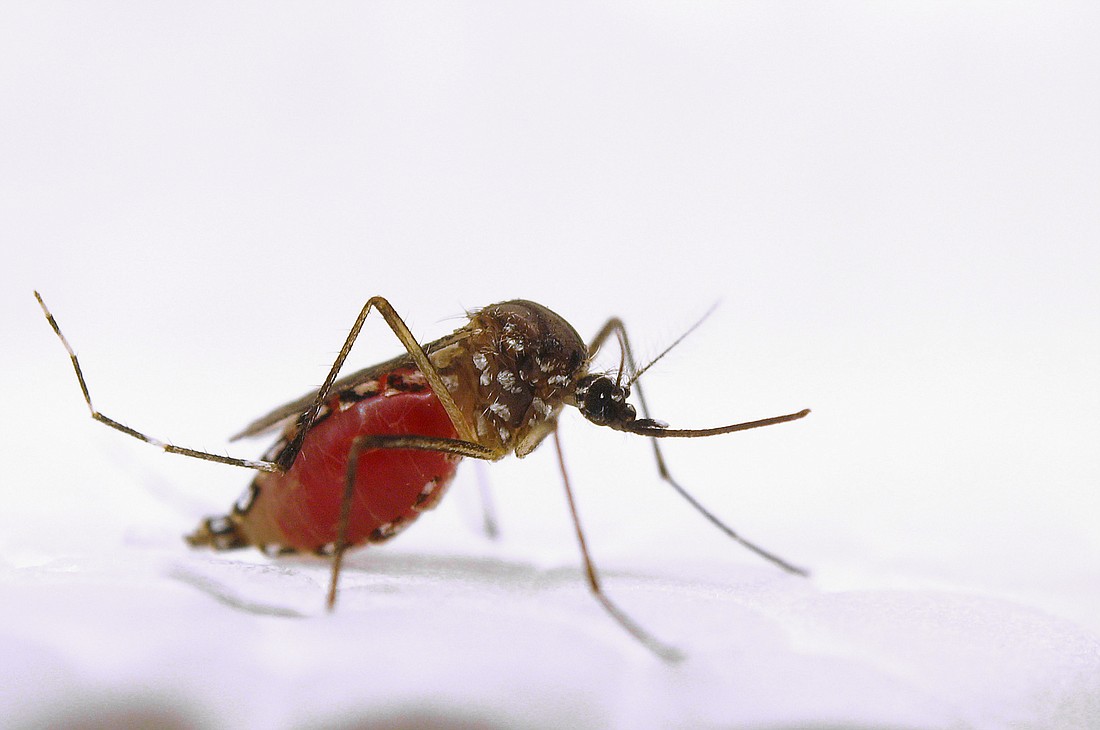- May 10, 2024
-
-
Loading

Loading

Bus Fischer doesn’t like mosquitoes.
When he and his wife eat summer dinners on their screened-in porch, the 15-year resident said he sees “hundreds of those things” buzzing just outside. It’s often unpleasant to be outdoors when there are that many insects looking to feast on his blood, Fischer said.
And his complaints aren’t without merit. The Key’s Longbeach Village has one of the highest summertime populations of mosquitoes in Manatee County, said Chris Lesser, assistant director of the Manatee County Mosquito Control District.
“I would welcome any chance to have an effective way to get rid of them,” Fischer said.
Fischer said he did just that earlier this year when a representative from the Manatee County Mosquito Control District knocked on his door. The county worker wanted to know if Fischer would like to volunteer his yard for an experiment in controlling mosquito populations.
Frustrated with frequent mosquito swarms in the summer and unsure about the safety of conventional insecticides, Fischer accepted.
Manatee County Mosquito Control District partnered with the Dutch company In2Care to test the effectiveness of a new technique for controlling mosquito populations.
“We’re constantly looking for novel techniques for controlling mosquitoes,” Lesser said. “When we say novel, we mean outside the traditional techniques of spraying insecticides.”
The In2Care trap, which looks like a black five-gallon bucket, Lesser said, is being offered to Village residents at no cost as a means of testing its effectiveness. This will be the first experiment of this size with the In2Care trap in the United States, said entomologist Joseph Conlon, a technical adviser for the American Mosquito Control Association.
It works like this:
The trap is not intended to kill mosquito outright, but rather infect the mosquito so it spreads larva-killing compounds to multiple mosquito infestations in the area.
“I’m hopeful. I wouldn’t say confident. I would say hopeful. It’s worth a shot, to me,” Fischer said.
About 50% of the residents in The Village have enlisted in this experiment — the mosquito control district needs at least 80% to 90% participation for an effective study.
“It’s an excellent concept and there’s no reason it shouldn’t work,” Conlon said.
Mosquitoes are the deadliest animal on the planet, playing a role in the deaths of more than 1 million people each year by transmitting diseases worldwide, Conlon said.
The breed of mosquito that swarm in the Village, known in the scientific community as aedes aegypti, are well-known diseases spreaders, Conlon said. Dengue, yellow fever and the Zika virus are all connected to aedes aegypti, according to In2Care.
And these insects prefer people for food, Conlon said. They’re known to breed around humans in containers filled with water, not in ditches or swamps like other mosquitoes, Conlon said.
The aedes aegypti is “a very fidgety, finicky eater,” Conlon said. They prefer lower extremities and, at the sign of the slightest twitch, will disengage and feed on a new host. These insects could consume blood from 10 to 15 individuals before it has eaten its fill, Conlon said.
That means 10 to 15 individuals could be infected with a disease by a single mosquito, Conlon said.
These insects also lay eggs in more than one place, Conlon said. For that reason, the In2Care trap is designed to allow mosquitoes to escape and lay infected eggs in multiple locations where other pests could have also laid their brood.
“You generally don’t rely on one method to control a mosquito population,” Conlon said.
That’s not to say that In2Care trap won’t be effective, but it won’t be the end all to the Village’s mosquito problem, Conlon said.
That’s because effective mosquito control requires an integrated approach, attacking the mosquito populations in a variety of ways to decrease their population size. Conlon said it’s important to remember the three “D’s” of mosquito control: drain, dress and defend.
That means emptying water-filled containers on a property and scrubbing them clean every five days, Conlon said. The average time it takes for aedes aegypti eggs to hatch is no less than five days, Conlon said.
Light colored clothing can also help reduce the number of mosquitoes attracted to oneself. Aedes aegypti love dark colors, Conlon said.
Repellents are also effective in controlling mosquito populations, but they need to be the right ones, Conlon said. The most effective repellent, the “gold standard,” Conlon said, is DEET: a 25% to 35% concentration of the stuff will give about four to eight hours of relief from the blood-sucking insects.
Other effective repellents will be certified by the Environmental Protection Agency, a designation discernible by an EPA registration number typically listed above an ingredients label on pest repellents.
“You’re never going to get rid of aedes aegypti if the public doesn’t participate,” Conlon said.